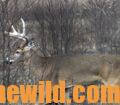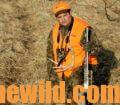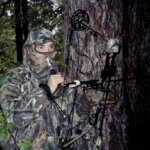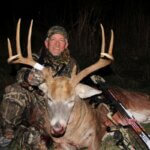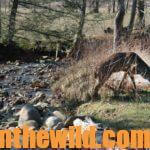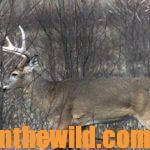Editor’s Note: Although the time is near the middle of February, several states still are having deer season. Next year, you can plan to hunt in Delaware, Texas, Rhode Island, Ohio, Louisiana, Pennsylvania and Maryland until the end of January. The states holding February deer hunts, include:
* my home state of Alabama with some sections of the state still in rutting season. Alabama’s deer season ends in mid-February;
* Mississippi, where you can hunt with primitive weapons (archery and muzzleloaders) until mid-March, in parts of the state;
* Florida’s Panhandle where deer season lasts until February 23;
* Arkansas with a season ending the end of February; and
* Virginia with its urban archery hunts primarily on private lands to try to reduce suburban yard damage and deer-car collisions that doesn’t end until March 29th.
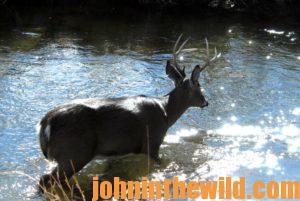 Some years ago, I asked Dr. Larry Marchinton, retired professor of wildlife sciences at the University of Georgia, who has studied and researched white-tailed deer for years, “If you only could pick one area where you think your odds were best for taking a buck, what would that area be like, and why would you pick that one site?” Marchinton didn’t hesitate when he answered, “To take a buck at any time of the year, your odds are best when you’re hunting a funnel.”
Some years ago, I asked Dr. Larry Marchinton, retired professor of wildlife sciences at the University of Georgia, who has studied and researched white-tailed deer for years, “If you only could pick one area where you think your odds were best for taking a buck, what would that area be like, and why would you pick that one site?” Marchinton didn’t hesitate when he answered, “To take a buck at any time of the year, your odds are best when you’re hunting a funnel.”
Any time you spot an hourglass shape on the landscape where two-different habitat types come close together to create a small opening, you’ve discovered a bottleneck or a funnel. Deer hunters need to recognize the importance of bottlenecks because generally the deer living on both ends of a bottleneck will travel through that bottleneck to move from one place to the other. If you hunt a bottleneck with a wind that blows your scent away from the bottleneck, you’ll see more deer passing through the bottleneck than you’ll spot on either end of the bottleneck. Bowhunters enjoy hunting bottlenecks, particularly since usually they can see across a bottleneck and shoot from one side of the bottleneck to the other.
 Of course, you may locate a bottleneck that’s wider than you can shoot across, which means some deer may pass through the bottleneck out of range of your bow. I know from my own personal hunting, if I try to hunt a bottleneck like this, the buck I want to take always seems to pass through the bottleneck on the side of the bottleneck where I can’t get-off a shot. To solve this problem, you have to shrink the bottleneck. First decide which side of the bottleneck you want to hunt. For instance, you’ll want to hunt the southeast side of the bottleneck, if the bottleneck runs north and south, and the prevailing wind usually comes from the northwest. Evaluate the bottleneck you hope to hunt in light of prevailing wind direction, and decide where you need to set up your stand. Also remember that during early bow season in much of the South, you also may have a southerly wind coming up from the Gulf of Mexico.
Of course, you may locate a bottleneck that’s wider than you can shoot across, which means some deer may pass through the bottleneck out of range of your bow. I know from my own personal hunting, if I try to hunt a bottleneck like this, the buck I want to take always seems to pass through the bottleneck on the side of the bottleneck where I can’t get-off a shot. To solve this problem, you have to shrink the bottleneck. First decide which side of the bottleneck you want to hunt. For instance, you’ll want to hunt the southeast side of the bottleneck, if the bottleneck runs north and south, and the prevailing wind usually comes from the northwest. Evaluate the bottleneck you hope to hunt in light of prevailing wind direction, and decide where you need to set up your stand. Also remember that during early bow season in much of the South, you also may have a southerly wind coming up from the Gulf of Mexico.
For example, if you pinpoint a likely-looking bottleneck with a large woodlot on its south end and north end, then you need to set up your tree stand on the southwest side of the bottleneck to take advantage of the prevailing wind. But, perhaps this bottleneck has a 100-yard width, which means deer may pass through the bottleneck out of bow range, if you’re bowhunting. To shrink this bottleneck, go to the western side of the bottleneck, and use limbs, bushes and sticks to create a small, natural wall, 3- to 4-feet high. Then extend that brushy wall all the way across the bottleneck to within 30 yards of your tree stand, angling it like the neck of a funnel from the west side of the funnel toward the east side. You’ve actually created a smaller funnel inside the funnel. Of course, deer simply can hop-over that little brushy wall. But, generally if nothing pressures the deer, then when they hit that brushy wall, they’ll follow it to its end and walk around it, putting every deer that comes through the funnel within your range.
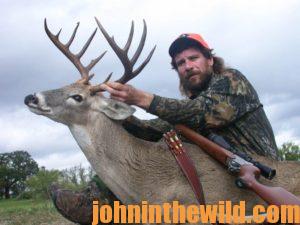 You also can make a funnel by using a fence. If you notice deer walking along the edge of a fence, you can pick a spot where you want to put your tree stand within bow range of the fence. Utilize a forked stick to make the gap somewhat wider between the middle-two strands of a barbed-wire fence. Make sure you have the permission of the landowner before you do this. Also check out whether or not any cattle or other livestock may come through that hole in the fence on either side. By using this forked stick to spread the barbed wire, you create a hole for the deer to go through, and any deer walking up and down the fence now has a funnel it can use to move from one side of the fence to the other.
You also can make a funnel by using a fence. If you notice deer walking along the edge of a fence, you can pick a spot where you want to put your tree stand within bow range of the fence. Utilize a forked stick to make the gap somewhat wider between the middle-two strands of a barbed-wire fence. Make sure you have the permission of the landowner before you do this. Also check out whether or not any cattle or other livestock may come through that hole in the fence on either side. By using this forked stick to spread the barbed wire, you create a hole for the deer to go through, and any deer walking up and down the fence now has a funnel it can use to move from one side of the fence to the other.
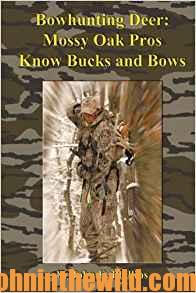 To learn more about hunting for deer, check out John E. Phillips’ bowhunting books, available in Kindle and print, “Bowhunting Deer: Mossy Oak Pros Know Bucks and Bows” (http://amzn.to/1QGvdQx); “Bowhunting
To learn more about hunting for deer, check out John E. Phillips’ bowhunting books, available in Kindle and print, “Bowhunting Deer: Mossy Oak Pros Know Bucks and Bows” (http://amzn.to/1QGvdQx); “Bowhunting 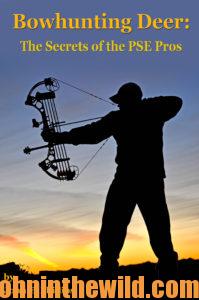 Deer: The Secrets of the PSE Pros” (http://amzn.to/VBr1qW). You may have to copy and paste these links into your browser. (When you click on the books, notice on the left where Amazon says you can read 10% of
Deer: The Secrets of the PSE Pros” (http://amzn.to/VBr1qW). You may have to copy and paste these links into your browser. (When you click on the books, notice on the left where Amazon says you can read 10% of 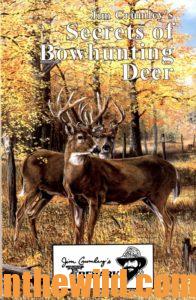 the books for free). Also check out “Jim Crumleys Secrets of Bowhunting Deer,” available in Kindle and print at http://amzn.to/XYTCEY.
the books for free). Also check out “Jim Crumleys Secrets of Bowhunting Deer,” available in Kindle and print at http://amzn.to/XYTCEY.
Tomorrow: Using Weird Funnels to Help You Take Deer

